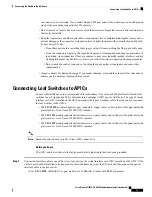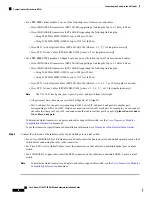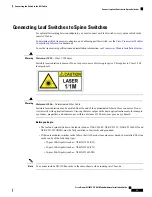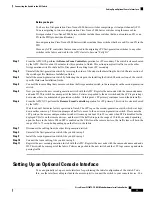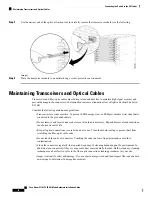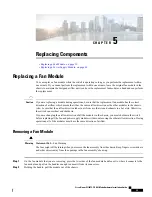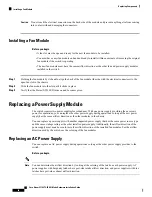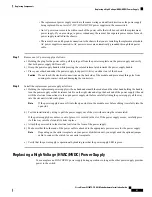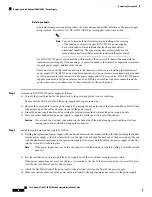
Figure 1: Connections Between APIC Clusters, Leaf Nodes, and Spine Nodes
Preparing to Connect to Other Devices
When preparing to connect the fabric devices, consider the following for each type of interface, and gather
all of the required equipment before making the connections:
• Cabling type required for each interface type
• Distance limitations for each signal type
• Additional interface equipment required
When running power and data cables in overhead or subfloor cable trays, we strongly recommend that you
locate power cables and other potential noise sources as far away as practical from network cabling that
terminates on Cisco equipment. In situations where long parallel cable runs cannot be separated by at least
3.3 feet (1 meter), we recommend that you shield any potential noise sources by housing them in a grounded
metallic conduit.
Note
The optical transceivers that are not already assembled to their cables come separate from their cables. To
prevent these transceivers and their cables from being damaged, we recommend that you keep the transceivers
disconnected from their cables when installing them in ports and then insert the optical cable into the transceiver.
When removing transceivers from ports, remove their cables before removing the transceivers.
To maximize the effectiveness and life of your transceivers and optical cables, do the following:
• Wear an ESD-preventative wrist strap that is connected to an earth ground whenever handling transceivers.
The switch is typically grounded when you install transceivers and provides an ESD port to which you
Cisco Nexus 93108TC-FX ACI Mode Hardware Installation Guide
30
Connecting the Switch to the ACI Fabric
Preparing to Connect to Other Devices
















